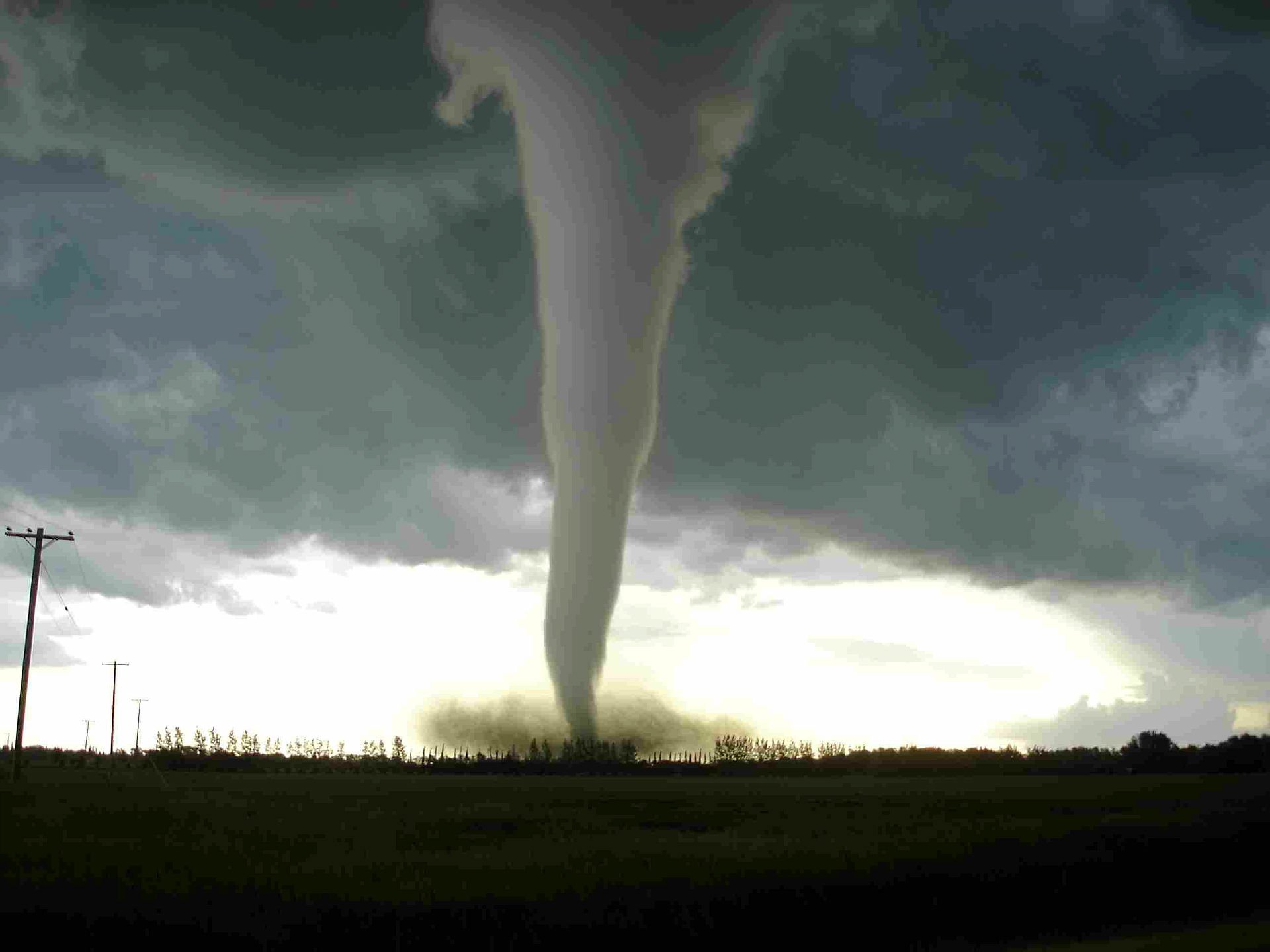Tornado Formation and Characteristics

Tornadoes form when warm, moist air from the Gulf of Mexico meets cold, dry air from the north. The warm air rises, creating an updraft. As the updraft rises, it cools and condenses, releasing latent heat. This heat fuels the updraft, causing it to become even stronger.
The updraft can reach speeds of up to 100 miles per hour. As it rises, it begins to rotate. The rotation is caused by the Coriolis effect, which is a force that deflects objects moving in the atmosphere. The faster the updraft rotates, the more intense the tornado becomes.
Tornadoes can have a variety of shapes and sizes. They can be as narrow as a few feet or as wide as a mile. They can also be as short as a few hundred feet or as tall as several miles.
The most common type of tornado is the weak tornado. Weak tornadoes have wind speeds of up to 110 miles per hour and can cause damage to trees, power lines, and buildings.
Strong tornadoes have wind speeds of up to 158 miles per hour and can cause significant damage to buildings and infrastructure. Violent tornadoes have wind speeds of up to 200 miles per hour and can cause catastrophic damage.
Tornado Safety and Preparedness: Posibilidad De Tornado

Tornadoes are unpredictable and can cause severe damage. Being prepared can increase your chances of staying safe during a tornado.
Developing a comprehensive tornado safety plan is essential for individuals and communities. This plan should include:
- Identifying safe places to take shelter in your home, school, or workplace.
- Establishing a communication plan with family and friends to stay connected in case of an emergency.
- Preparing an emergency kit with essential supplies such as water, food, a first-aid kit, and a battery-powered radio.
Taking Shelter During a Tornado
When a tornado warning is issued, seek shelter immediately in a sturdy building. The best place to take shelter is in a basement or an interior room on the lowest floor of your home. If you are outside, lie flat in a ditch or low-lying area and cover your head with your hands.
Stay away from windows, doors, and exterior walls. If possible, get under a heavy piece of furniture, such as a table or bed. Cover your body with blankets or pillows to protect yourself from flying debris.
Tornado Forecasting and Warning Systems

Posibilidad de tornado – The devastating impact of tornadoes demands accurate and timely forecasting and warning systems to safeguard lives and property. Meteorologists employ various techniques to predict and issue warnings for these destructive weather events.
Methods of Tornado Forecasting, Posibilidad de tornado
Forecasting tornadoes involves monitoring atmospheric conditions and identifying factors that favor their formation. Key indicators include:
- Convective Available Potential Energy (CAPE): Measures the energy available for upward movement in the atmosphere, fueling tornado development.
- Wind Shear: Differences in wind speed and direction with height, creating rotation that can lead to tornadoes.
- Supercell Thunderstorms: Persistent, rotating thunderstorms that often produce tornadoes.
- Mesocyclone: A rotating updraft within a thunderstorm, often associated with tornadoes.
Types of Tornado Warning Systems
Once a tornado threat is identified, warning systems are activated to alert the public. Different types of systems exist, each with its capabilities and limitations:
- Tornado Watches: Issued when conditions are favorable for tornado development, providing a lead time of several hours.
- Tornado Warnings: Issued when a tornado has been detected or is imminent, urging immediate action.
- Tornado Sirens: Outdoor warning devices that emit a distinctive sound to alert people in the immediate vicinity.
- Weather Radios: Battery-powered devices that receive NOAA Weather Radio broadcasts, providing real-time tornado warnings.
- Mobile Apps: Smartphone applications that deliver tornado warnings and provide access to real-time weather information.
Comparison of Tornado Warning Systems
| System | Capabilities | Limitations |
|---|---|---|
| Tornado Watches | Provides advance notice of potential tornado development | May lead to false alarms, causing unnecessary anxiety |
| Tornado Warnings | Issues immediate alerts when a tornado is detected | Limited lead time, may not provide sufficient warning |
| Tornado Sirens | Loud, attention-grabbing alerts for immediate action | Limited range, may not reach everyone in affected areas |
| Weather Radios | Provides continuous weather updates and tornado warnings | Requires batteries or power, may not be portable |
| Mobile Apps | Provides real-time warnings and access to weather information | Relies on cellular or Wi-Fi connectivity, may not be accessible in all areas |
La posibilidad de tornados se cierne sobre nosotros, un recordatorio del poder implacable de la naturaleza. A medida que la depresión tropical Beryl se acerca a nuestras costas, sus vientos y lluvias torrenciales traen consigo el potencial de generar estas fuerzas destructivas.
Pero incluso en medio de la incertidumbre, la esperanza persiste, recordándonos que incluso los vientos más fuertes pueden calmarse y que incluso las tormentas más oscuras darán paso a cielos despejados.
The looming possibility of tornadoes dances on the horizon, a silent threat woven into the fabric of the approaching storm. As Tropical Depression Beryl gathers strength , the potential for these destructive twisters intensifies, casting an ominous shadow over the land.